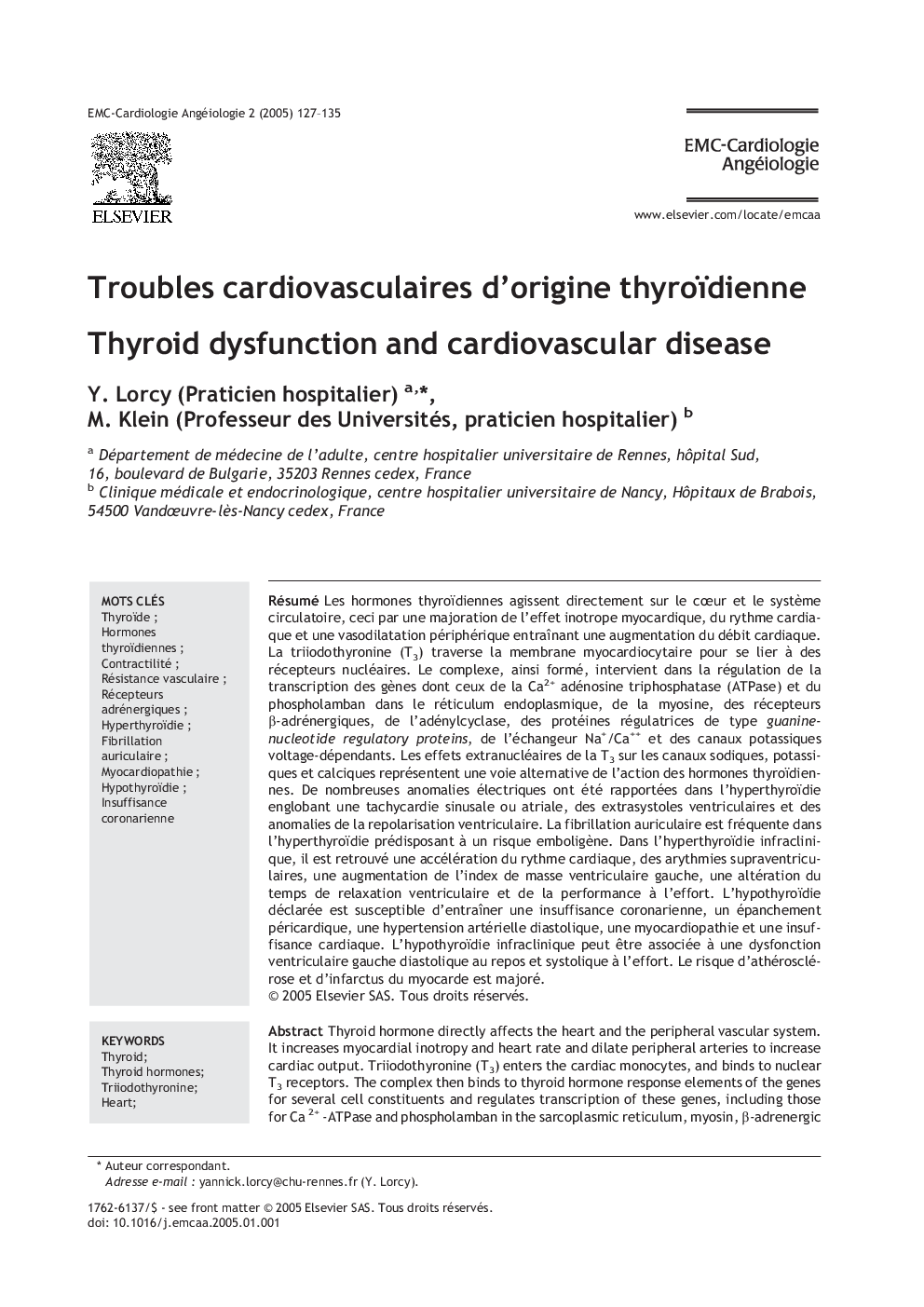| Article ID | Journal | Published Year | Pages | File Type |
|---|---|---|---|---|
| 9167441 | EMC - Cardiologie-Angéiologie | 2005 | 9 Pages |
Abstract
Thyroid hormone directly affects the heart and the peripheral vascular system. It increases myocardial inotropy and heart rate and dilate peripheral arteries to increase cardiac output. Triiodothyronine (T3) enters the cardiac monocytes, and binds to nuclear T3 receptors. The complex then binds to thyroid hormone response elements of the genes for several cell constituents and regulates transcription of these genes, including those for Ca 2+ -ATPase and phospholamban in the sarcoplasmic reticulum, myosin, β-adrenergic receptors, adenylyl cyclase, guanine-nucleotide- binding proteins, Na+/Ca2+ exchanger, Na+/K+ - ATPase, and voltage-gated potassium channels. Non nuclear T3 actions on ion channels for sodium (Na+), potassium (K+), and calcium (Ca2+) ions represent an alternative way of action for thyroid hormone. Many electrocardiographic abnormalities have been described in hyperthyroidism including sinus tachycardia, atrial and ventricular extrasystoles, atrial fibrillation (AF), atrioventricular block and ventricular repolarisation abnormalities. AF is common in patients with hyperthyroidism, which predisposes to embolic events. Subclinical hyperthyroidism is associated with increased heart rate atrial arrhythmias, increased left ventricular mass impaired ventricular relaxation and reduced exercise performance. Overt hypothyroidism increases of coronary disease, pericardial effusion, systolic hypertension, myocardiopathy and congestive heart failure. Subclinical hypothyroidism is associated with impaired left ventricular diastolic dysfunction at rest, with systolic dysfunction in case of stress; the risk for atherosclerosis and myocardial infarction is increased.
Keywords
Contractilitycoronary artery diseaseTriiodothyronineThyroidThyroideAtrial fibrillationFibrillation auriculaireHeartVascular resistanceMyosinMyocardiopathieHormones thyroïdiennesThyroid hormonesHyperthyroidismHyperthyroïdieCardiomyopathyHypothyroidismhypothyroïdieInsuffisance coronarienneAdrenergic receptors
Related Topics
Health Sciences
Medicine and Dentistry
Cardiology and Cardiovascular Medicine
Authors
Y. (Praticien hospitalier), M. (Professeur des Universités, praticien hospitalier),
